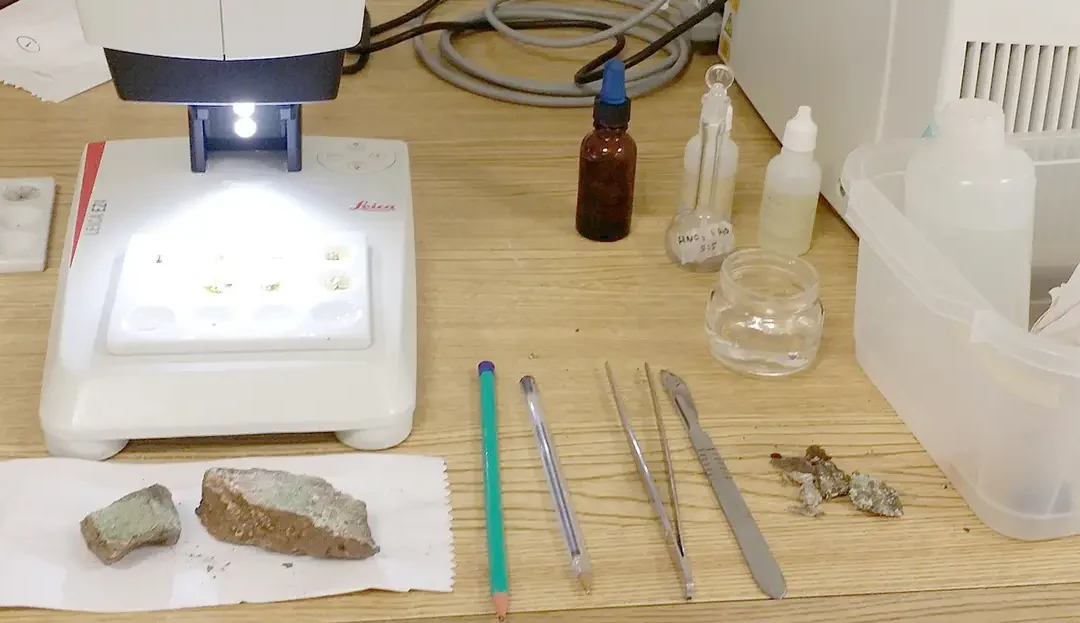Geotechnical Classification Testing
Geotechnical
 This blog discusses what type of soil samples are suitable for which geotechnical laboratory classification tests. But what are the lab tests we use and how do they help you? Most importantly how, by choosing to work with Ground & Water, do you get the best outcome from these tests?
This blog discusses what type of soil samples are suitable for which geotechnical laboratory classification tests. But what are the lab tests we use and how do they help you? Most importantly how, by choosing to work with Ground & Water, do you get the best outcome from these tests?
Firstly we will outline the background to the five most common tests; what they mean and how, by using the guidance we derive from them, can this help you reduce your construction costs.
It is important to understand that the quality of the data gathered from laboratory tests of soil samples, is largely dependent on the quality of the samples. You can read more about this here: The G&W Guide to… Sample Disturbance
The tests are:
- The Atterberg test.
- The Moisture Content test/profile
- The PSD/Wet Sieve test
- The pH/Sulphate or BRE Special Digest test
- And Tri-axial Tests.
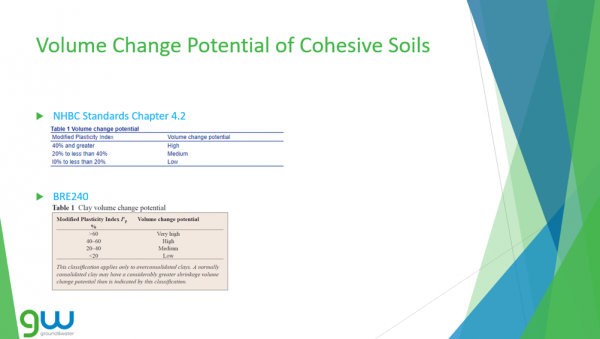 Atterberg Testing – Atterberg tests establish the moisture contents at which soils transition between solid, semi-solid, plastic and liquid states. They identify the Plastic Limit (PL), Liquid Limit (LL), Moisture Content (MC), and Plasticity Index (PI).
Atterberg Testing – Atterberg tests establish the moisture contents at which soils transition between solid, semi-solid, plastic and liquid states. They identify the Plastic Limit (PL), Liquid Limit (LL), Moisture Content (MC), and Plasticity Index (PI).
- LL – the water content at which soil changes from plastic to liquid states
- PL – the water content at which soil changes from a plastic to a semi solid state
- PI = PL – LL
These tests are undertaken on cohesive soil samples to determine volume change potential.
Moisture Content Tests/Profiles – Moisture content tests state the percentage of moisture within a sample. The change in sample moisture content with depth in a borehole or trial pit forms the moisture content profile. They are undertaken on cohesive soil samples to investigate potential moisture deficits.
Moisture deficits can be due to:
- Over consolidated nature of cohesive soils
- Granular content
- Water uptake from roots
PSD/Hydrometer/Pipette Testing – Particle Size Distribution (PSD) tests establish the distribution of gravels, sands and fines within a soil sample. Hydrometer/pipette sedimentation testing also shows the distribution of clays and silts. They are undertaken on granular soil samples to determine volume change potential.
Notes:
- BRE240 States: A soil has a volume change potential when the clay fraction exceeds 15%. Only the silt and clay combined fraction are determined by sieving therefore the volume change potential is estimated from the percentage passing the 63μm sieve.
- NHBC Standards Chapter 4.2 states: A soil is shrinkable if the percentage of silt and clay passing the 63μm sieve is gr eater than 35% and the Plasticity Index is greater than 10%.
- Pipette Testing determines the silt/clay concrete with PSD giving the % passing the fine sand
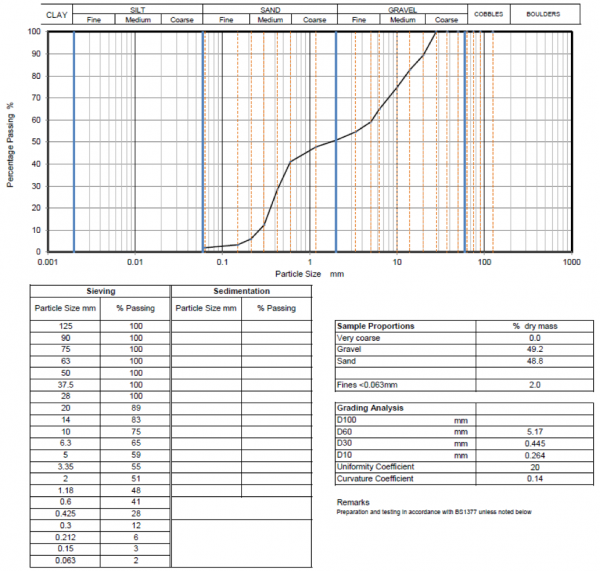
Sulphate and pH Testing – Testing of sulphates and pH is necessary to investigate the risk of corrosion to concrete placed in natural soils. Why?
- The higher the pH, the more risk to concrete
- The lower (more acidic) the pH, the more risk to concrete
There are numerous caveats within the BRE211 document used to classify concrete, BRE Special Digests 1. Different classifications and caveats are applicable between brownfield/greenfield and static /mobile groundwater and different geologies.
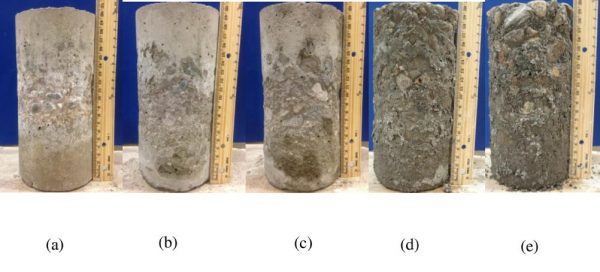
This photo shows the effect of sulphate attack on concrete.
Triaxial Testing – Undrained triaxial testing is undertaken on undisturbed cohesive soil samples to determine undrained shear strength. When a clay is loaded, it will not let the water out immediately (i.e. remains undrained) and that is when most of the failures occur. These failures can be compared with the undrained shear strength found from SPT/DP data. The tests categorise the type of failure (brittle, compound, plastic) and the pressure applied.
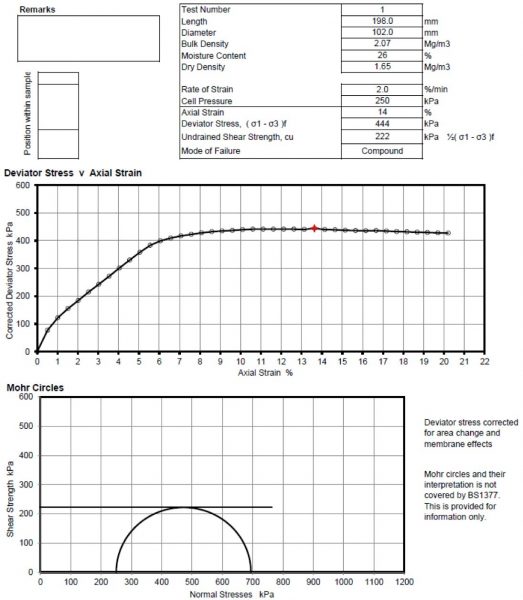
How many tests should we do?
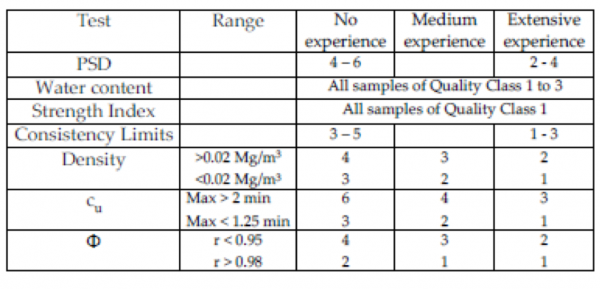
Ground & Water uses the guidance to maximise the potential in the ground, therefore helping you to get the best out of it. The more tests Gound & Water can use means the existing guidance can be used to its full potential.
Think of it this way… How would your construction costs be effected should a site be classified as Medium VCP instead of High? What would it do to your construction costs if the concrete used on a site could be DS2 instead of DS4 or 5?
 Also how much more sustainable (and cheaper) would this be too? In simple terms: while carrying out multiple lab tests may appear a expensive option on top of the Site Investigation costs, enabling us to use the best data possible will save you money in the longer term.
Also how much more sustainable (and cheaper) would this be too? In simple terms: while carrying out multiple lab tests may appear a expensive option on top of the Site Investigation costs, enabling us to use the best data possible will save you money in the longer term.
